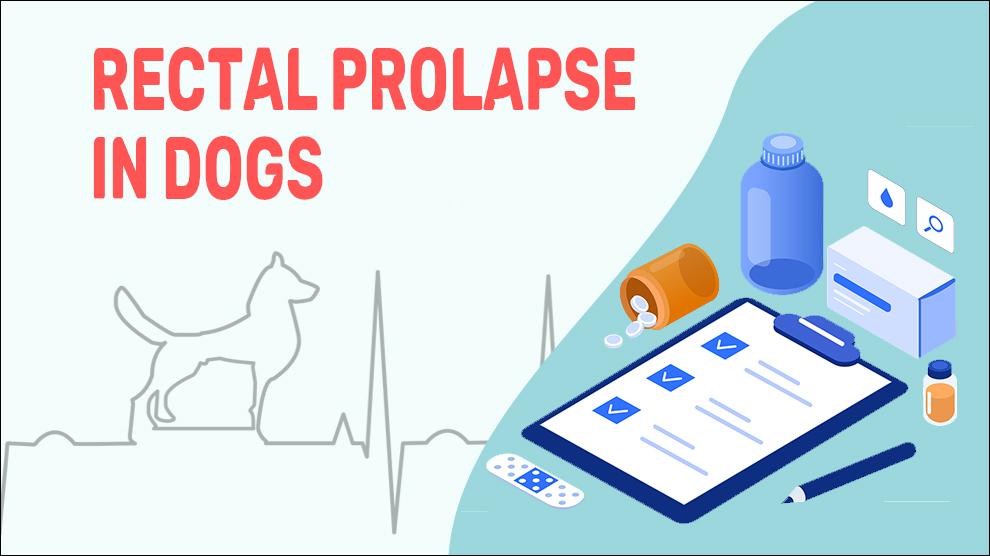Prolapse is when any part of the body falls or slips down from its original anatomical position. When the rectum slides or drops down from its normal position within the pelvic area or sometimes, sticks out through the anus, it is called rectal prolapse. The rectum is the lower section of the large intestine (sigmoid colon and above the anus). This section is a storage unit of wastes from the colon before it is evacuated (defecation) through the opening called the anus.
Rectal prolapse is prevalent in older dogs that have fragile pelvic floor muscles or a long history of constipation.
The longer the dogs have this condition, the worse it can get. However, rectal prolapse is typically a self-limiting condition and it responds to conventional treatment. Female dogs are more overrepresented than male dogs, and even more common in older female dogs, but occurs in puppies too.
There are 2 types of rectal prolapse:
Type 1-false procidentia: also called mucosal or partial prolapse, this involves only the prolapsed mucosa and prolapse is only less than 2 cm.
Type 2- true procidentia:
Also called complete prolapse, this is similar to intussusception and it is distinguished by the full-chunk protrusion of the rectal wall.
First-degree complete prolapse: > 5 cm from the anal verge
Second degree: > 2 to <5 cm from the anal verge
Third-degree (occult rectal prolapse): No protrusion through the anal verge
Symptoms Of Rectal Prolapse
- Dough-nut or sausage-like mass protruding from the anus
- Reddened cylindrical Protrusions with blood
- Pain/discomfort
- Scooting
- Straining bowel movement, urination
Treatment Options For Rectal Prolapse
Depending on the cause of the prolapse (infectious or non-infectious cause), your vet may prescribe:
- Surgery: Vets may perform surgery to remove dead or dying colorectal tissue. Resection (surgical removal of a piece of tissue) and anastomosis (surgical reconnection of the ends of the rectum where the necrotic tissue was removed) will be done
- Steroids: To suppress the immune system and inflammation (prednisone)
- Antibiotics: Antivirals, antifungals, or anti-parasitic medications
- Intravenous fluids: For dehydrated dogs
- Pain medication: NSAIDs
Home Remedies For Rectal Prolapse
- To prevent the prolapsed tissue from drying out, gently apply petroleum jelly or saline or water-based lubricating jelly applied with a clean cloth.
- Although rectal prolapse is not a medical emergency, it is better to visit the vet as soon as possible.
Prevention Of Rectal Prolapse
- The bad news is Rectal prolapse can be caused by several factors, so it is difficult to prevent it.
- Now, the good news is, that prolapse is not so common in dogs and there are a few essential ways to help prevent meningitis in dogs.
- Stick to the basics. Follow the guidelines for preventing infections.
- Clean thoroughly any and all wounds, keep recommended vaccinations up to date and administer regular parasite preventatives.
- Regularly perform blood, urine, and fecal screenings.
Affected Breeds Of Rectal Prolapse
Young Dogs
There is no breed disposition.
Additional Facts For Rectal Prolapse
1. Causes:
- Chronic constipation
- Anal sac disease
- Perianal fistula
- Rectal and Anorectal Narrowing
- Increased bowel motility/ abdominal pressure
- Infectious diarrhea caused by giardiasis, trichuriasis, amebiasis, Shigella, Escherichia coli, Salmonella, and Ulcerative colitis
- Cystic fibrosis
- Congenital hypothyroidism
- myelomeningocele
- Spina bifida
- Mucosal polyps
- Imperforate anus post repair
- Tumors
2. Types:
- External prolapse: Almost all of the rectum extends out of the anus.
- Mucosal prolapse: Just a part of the rectal lining pokes out through the anus.
- Internal prolapse: Slippage starts but the rectum is not yet sticking outside the anus.
3. Mortality:
There is no documented mortality due to this condition.
4. Diagnosis:
Digital rectal exam.
5. Prognosis:
Mild, partial prolapse of anorectal tissue may resolve on its own after the underlying cause for straining gets over or cured. A true prolapse of anal and rectal tissue will be cured only by medical and/or surgical intervention.
When To See A Vet
Contact your vet right away, if you notice any of the following:
- Sausage or dough-nut like mass protruding from the anus
- Reddened cylindrical Protrusions with blood
Food Suggestions For Rectal Prolapse
- Fresh, home-cooked, balanced, or raw food diet.
- Avoid DRY FOOD and go for a fresh diet.
- Underground vegetables.
- Pureed pumpkin.
- Add fiber to your pup’s diet.
- Increase water intake or install a pet water fountain.
- Supplement prebiotics and probiotics formulated for pets.
Conclusion
The most favorable prognosis can be expected with early detection and appropriate treatment. This emphasizes the significance of a rectal examination as part of a routine physical examination in all dogs.
In cases of recurring rectal prolapse, colopexy is performed and the vet attaches your dog’s descending colon is attached to the left side of the abdominal wall to make it secured.

















